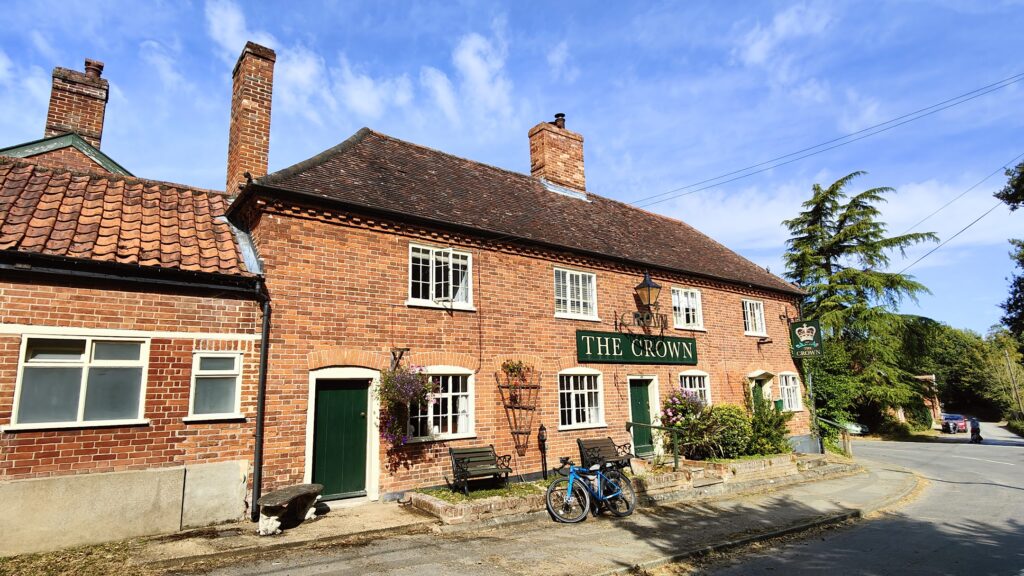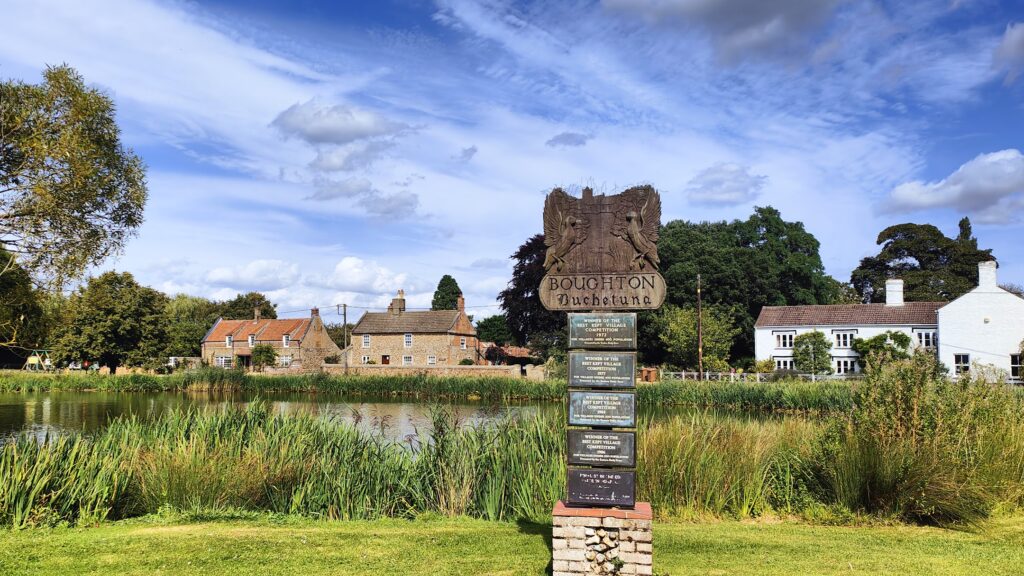
Yesterday was 102 miles of cycling in the sun, and today looked like being slightly more. I had a deadline of sorts: I was due to visit a long lost cousin in deepest Suffolk, and I wanted to arrive at a civilised hour in time for dinner and spend some time together. So I told the lady running the bnb that I needed an early start. When we agreed breakfast at 7.30am she laughed and said “That’s not early!”
But it is to me, and I thought I did well to be there as arranged, even if I was unable to get out of the door for a further 40 minutes. Still, it was going to be another lovely day and the wind was going to be of help across the flat land that lay ahead. I should be able to make good progress. I generally allow for ten miles per hour of elapsed time, and that includes stops. I’m pretty good at sticking to that and today I felt I might do even better.
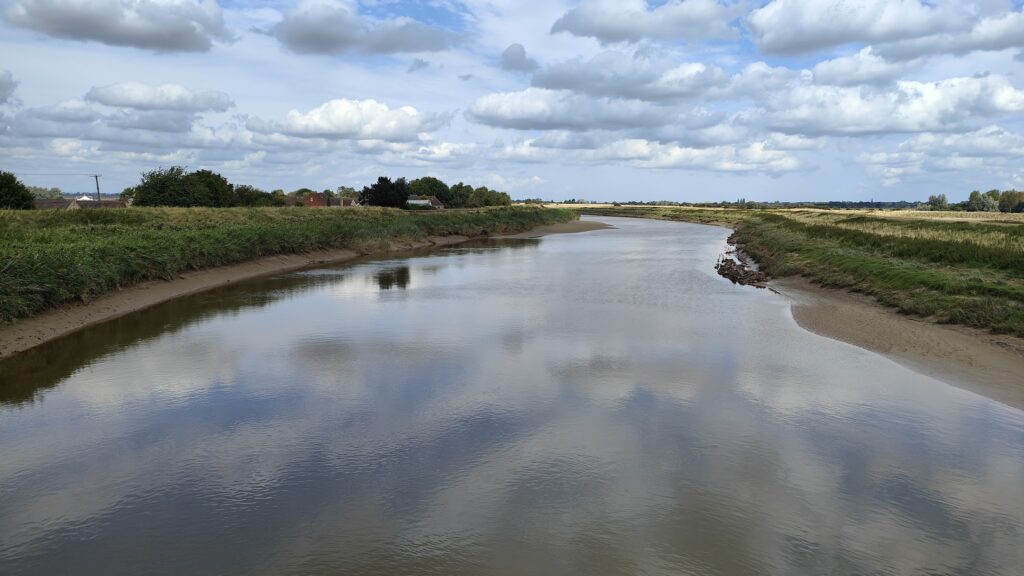
I left Spalding behind on the kind of busy roads that I habitually make a point of avoiding. It was a good reminder. But a couple of miles later I was whizzing along straight, empty lanes through the open expanses of Fenland. I passed nothing of note except a small airfield in the middle of nowhere, where tiny planes were taking off and landing on a grassy airstrip. I ignored their cafe in favour of taking a break at the next town, Wisbech, where I knew I had some reminiscing to do. Twenty five years ago this was briefly our second home, while Jenni was doing her careership with the National Trust at a beautiful Victorian garden at a property called Peckover House. For two years, she actually lived during the week inside part of the historic house, and at weekends I would often drive over from Nottingham to spend time there. So I speak with some experience about life in the Fens, and I can’t say I have missed it terribly.
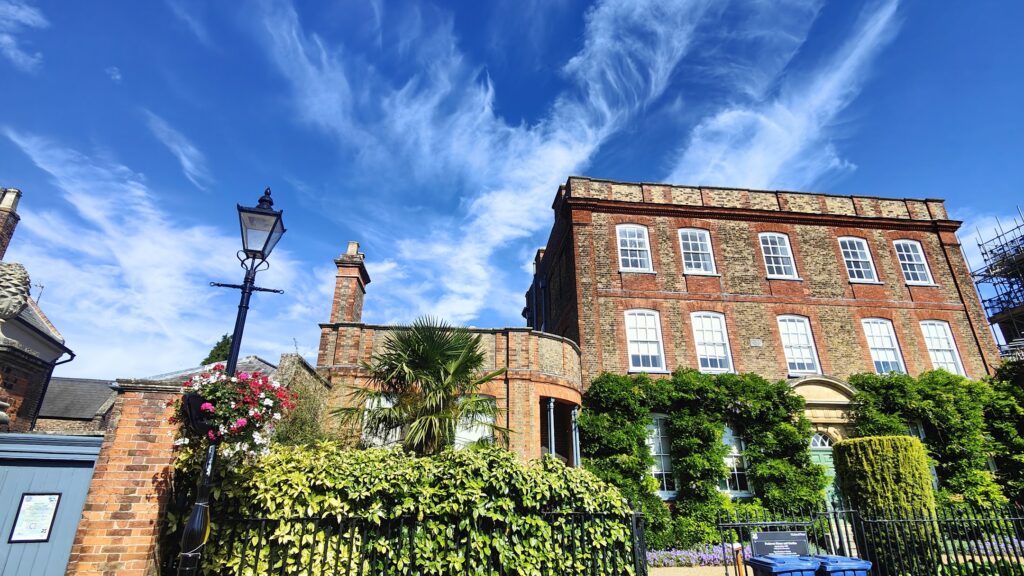
Wisbech is an odd place. It is a port of the River Nene and it has a collection of very fine Georgian brick houses along the banks of the river, known as the Brinks. Peckover House stands on the North Brink and is probably the grandest of them all, right next door to the home of the Lord Lieutenant of Cambridgeshire, in whose county I now was. There are other notable buildings in the town, such as its fine and ancient parish church, and there is a tall memorial to local activist Thomas Clarkson, a leading force in bringing about the Slave Trade Act of 1807, which legally ended British involvement in the trade of enslaved Africans. The memorial was partly funded by the Peckover family. But Wisbech also feels like it is struggling economically, with a market place that, while supplied with a range of open shops, didn’t make me want to stop and browse.
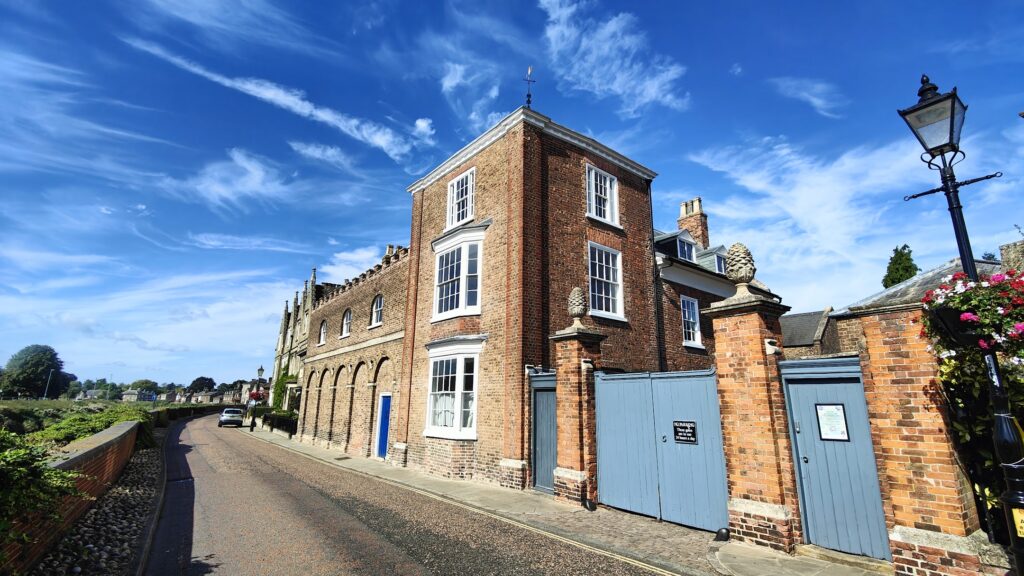
Just off the market place is another gem, the Georgian Crescent, actually a full circus (or circle) of brick built Georgian houses, not quite on the scale of Bath; but unexpected in a place like Wisbech. In the centre is a modestly large dwelling known as The Castle, and there is also a local museum and a cafe, where I stopped and enjoyed a very fine mascarpone cake on a terrace that overlooked the green centre of the circle, which was in effect the back garden of the castle, I suppose. I don’t remember that being there before.
There was another couple of miles of hair raising main road and then the relief of an hour on more empty fenland lanes before I crossed the broad River Great Ouse at Stow Bridge, a village a little inland from its outlet into The Wash. On the other bank I noticed the land begin to rise again gently, and I knew the wide, flat, drained part of England was now behind me. Not that it got hilly, you understand. But it did get heathy and flinty, which is a sure sign you are in East Anglia. And I started to see duck ponds and churches with round towers, which are something of a local speciality in these parts.
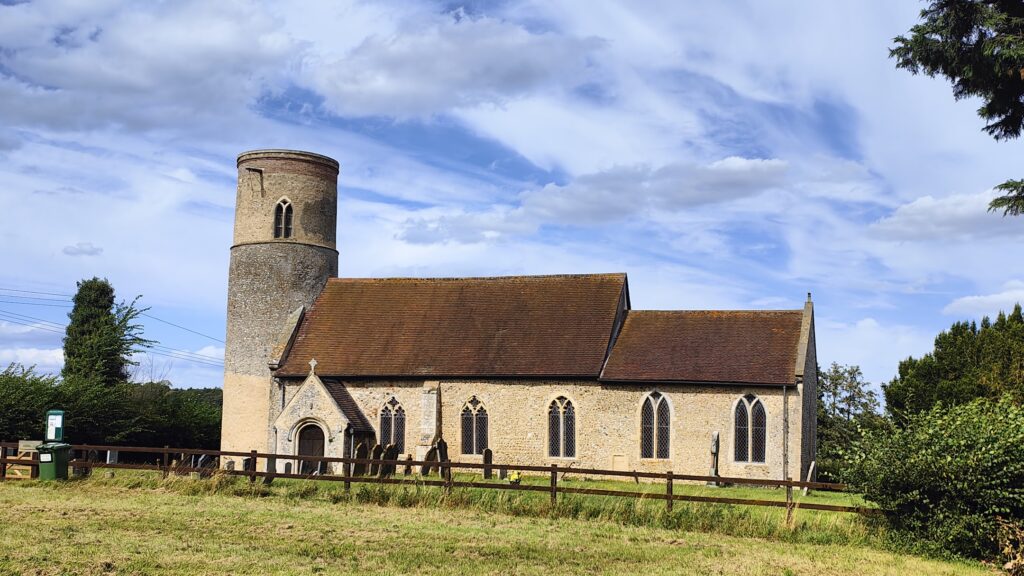
After more lanes and quiet villages, I arrived in Oxburgh, a tiny place with a magnificent brick built, moated Tudor hall. This was an excellent place to have lunch. Back in our Wisbech days (and as a National Trust employee) we visited here and I remember especially being fascinated by its priest hole. There were plenty of visitors here today and I wished I had more time. There was a very inviting pub, for one thing, and a fascinating village church that seemed to be what was left of a much larger, partly ruined flint structure. But I needed to keep moving.
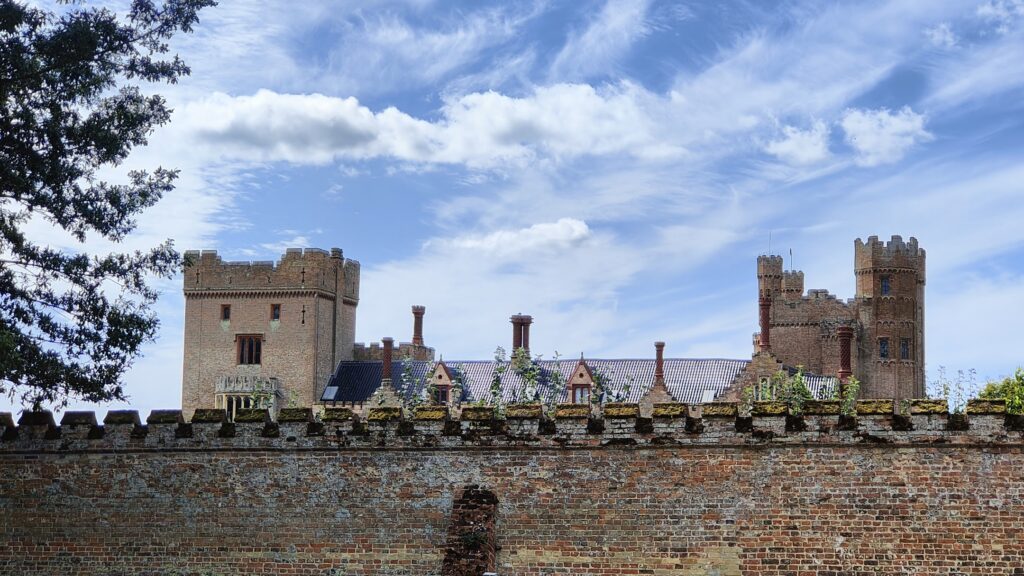
I had to skirt the top side of Thetford Forest, because there were no roads crossing this large area where I wanted to go. Much of this is used at times for military manoeuvres, and I saw signs warning of tanks crossing the road. I even saw some soldiers in a compound on the other side of a high fence, relaxing in the sun. But I passed through nowhere of special note until I suddenly realised I was in a collection of villages – The Rocklands – that I had been in before, in 2022, while I was crossing OS maps from west to east. I realised because it has a community shop cum cafe, with signs to attract passing cyclists. It was time I stopped and I enjoyed this little trip down memory lane. One of the volunteer staff, a nice lady, came outside with my pot of Earl Grey and stayed for a long chat. She was originally from Suffolk, but said it had got too busy for her in Manningtree, with its fast rail connections to London and Norwich. Here in rural Norfolk, she said, people had more time and gave each other space. This had been lost in her part of Suffolk, she said, and even worse in Essex! I know what she means. We moved to the Peak District, where the land around us is all protected, 22 years ago. Sheffield is just over the hill but it seems like a different world. I have grown to rather dislike large numbers of people.
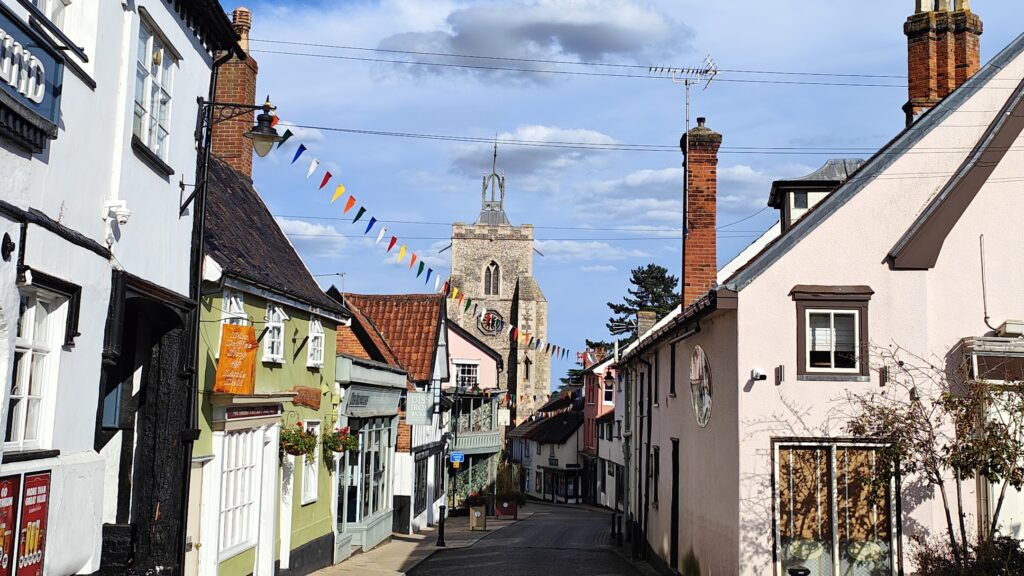
Duly refreshed, I set off again and cruised for another hour to the town of Diss, still just in Norfolk and with a very pretty town centre, complete with large mere and fountain. And from here it was harder to avoid at least some traffic as I took to B roads across the top of Suffolk to get me within easy reach tomorrow of the coast. There were some delightful villages with large, handsome churches, and then – just beyond Laxford – I was back on even smaller, but slightly more hilly country lanes until I dropped into the very quiet and very pretty village of Marlesford, where my second cousin Rachel lives in a cottage they are slowly doing up themselves. The village is a conservation area and the buildings are painted different shades of pink and orange. Some have thatched roofs. Many of the little communities around here are like this and you would be hard pressed not to like them.
The evening passed very happily with a trip to the local pub for dinner and plenty of catching up. It was a little out of my way to be here, a few miles below my official straight line to the coast, but I wasn’t going to come this close and not visit. I would straighten things out, so to speak, in the morning.
